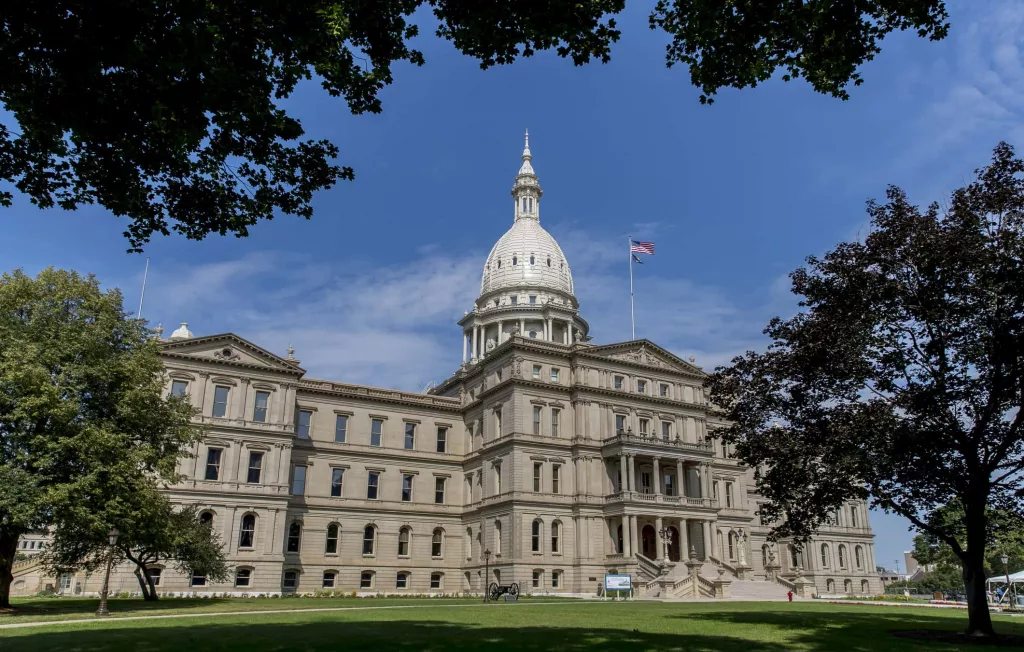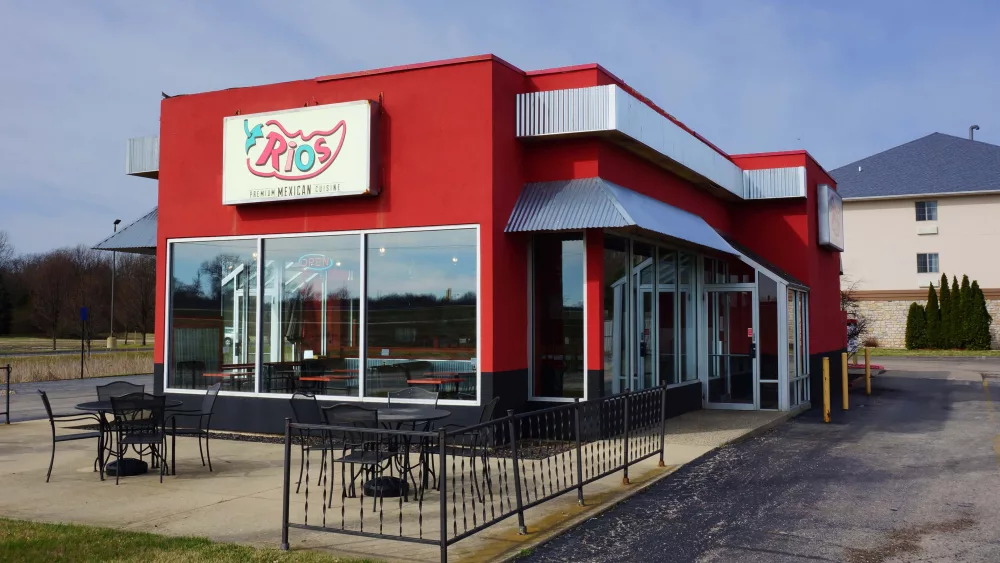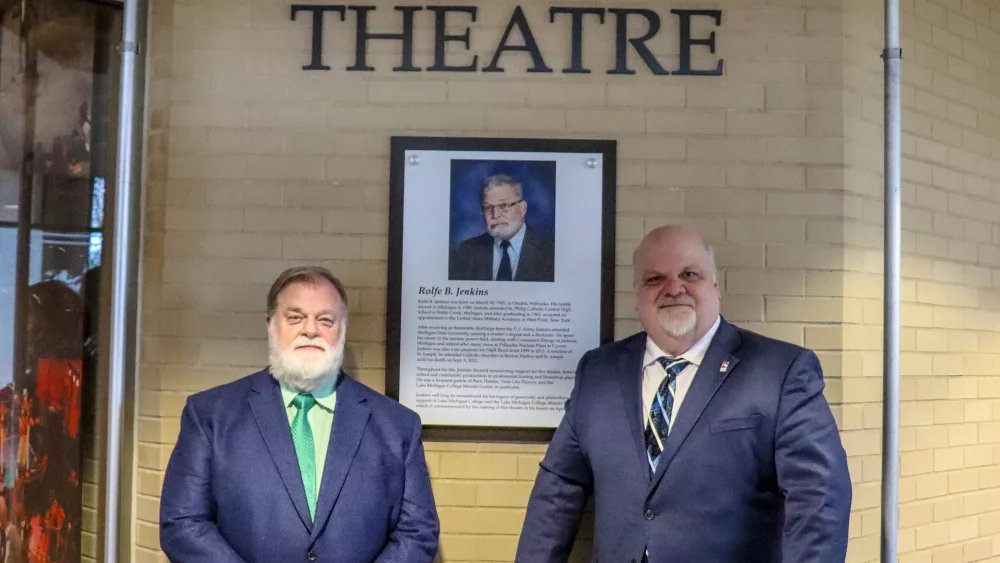One of Berrien County’s biggest challenges is a population decline over the past 30 or more years. The loss of people greatly impacts on the area’s ability to grow and prosper going forward. It’s a problem shared by most of the state of Michigan—and the ‘powers that be’ in Lansing are beginning to prioritize the issue. Governor Whitmer has appointed a bi-partisan panel to analyze the problem and suggest strategies to solve it.
Our partners in the non-profit newsroom of www.BridgeMI.com in Lansing have been paying close attention to the population issue. Here is an excerpt from their report on the first meeting of the Governor’s new council:
——————————————————————
Michigan Gov. Gretchen Whitmer’s new council tasked with growing the state’s population got a little younger and more bipartisan last week as she announced new appointments for the group’s first major meeting.
Whitmer added three state lawmakers as voting members on the Growing Michigan Together Council, including 23-year-old Democratic Rep. Alabas Farhat of Dearborn; Republican Rep. Pauline Wendzel of Bainbridge Township and Democratic Sen. Darrin Camilleri of Trenton, who are both in their early 30s.
Co-chair John Rakolta, a 76-year-old Republican businessman, began Thursday’s meeting in Detroit with a call for unity.
“We are aware of the challenges we face: population decline, stagnation, and to me, the toxic partisanship that has prevented us from realizing our full potential as a state,” Rakolta said.
“But today, we take a real step forward, driven by a shared belief that honesty, intellectual tension and open dialogue can bridge the divides that plague us.”
Whitmer’s new additions to the population council bring the average age of voting members down to about 52 years old, which is still well above the state’s average age of 40 years old, according to the U.S. Census Bureau.
That could pose challenges for the council of 21 voting members, which is tasked with helping attract young people to the state and keep natives from leaving, among other things.
Michigan remains the 10th most populous state in the nation, with about 10 million residents, but it has ranked 49th out of 50 for population growth since 1990.
Approximately 45 percent of Michiganders between the ages of 18 and 34 left the state in recent years, according to Public Sector Consultants CEO Julie Bennett, who reported those sobering numbers to the council on Thursday.
“Young people, and also folks that are more relatively educated, are the largest share that we’re seeing leaving Michigan,” Bennett told members.
“Our workforce is also getting much older,” added Bob Schneider, a senior research associate with the non-partisan Citizens Research Council, in his own presentation to the council.
Farhat, who on Thursday introduced himself as the youngest person in the room, is one of two council members under the age of 30, along with 28-year-old Ollie Howie of White Cloud, who is a Harvard University graduate and managing director at the New Community Transformation venture capital fund.
————————————————————————–
Prior to the appointment of the Governor’s new panel several entities cooperated to host a BridgeMI panel on the population decline, which resulted in a variety of viewpoints on the problem and possible solutions. Here is how www.BridgeMI.com summarized that late June discussion, setting the scene for the new Council’s work:
“Michigan needs consistent policy to turn around five decades of population losses that now threaten to further reduce its competitiveness with other states and limit economic opportunities — and, as a result, prosperity — here for generations to come.”
That’s the conclusion of a new report released by Citizens Research Council of Michigan (CRC), which focuses on the state’s public policy, and Altarum, a Michigan-based nonprofit focusing on health. The report paints a portrait of a state struggling to respond to a slow-moving crisis, according to reporting on it by Bridge Michigan this week.
Altarum, the CRC and Bridge hosted an online panel discussion on the report on Tuesday, with five panelists of experts in policy, government, equity and education, highlighting concerns and possible solutions.
Neal Hegarty, vice president of programs for the Charles Stewart Mott Foundation, one of the funders of the research, opened the program by saying that the state’s challenges — from the economy, education and infrastructure — are not insurmountable.
However, Hegarty said, they require “bold, explicit action.”
The report is intended to start a broad conversation to reverse the state’s slide in population and build prosperity, he said. The report found that political divisiveness either stalled progress or led to ideas being abandoned before they could yield results, but Hegarty and the 10 additional nonprofits who funded the effort are urging officials and other leaders to act with urgency.
Otherwise, Hegarty said, “Michigan’s ability to stay competitive in comparison to other states is in jeopardy.”
The problem starts with population loss, but extends throughout the economy and residents’ quality of life. Births are plummeting and deaths are rising. More people move from the state every year than residents of other states move in. Every other state in the Midwest is growing faster, while jobs that pay middle class wages and above increasingly require higher education. Earnings, housing values, tax revenue and services in coming years all will decline without changes, the researchers found.
Panelists discussed the broad range of challenges, which moderator Ron French, associate editor at Bridge Michigan, noted are interconnected and require attention across all of them, even as much of the focus was on education.
“You can’t just decide you’re going to invest a lot more money in schools and it’s going to fix the problem on its own,” French said.
Panelists included Amber Arellano, executive director of The Education Trust-Midwest, Gabe Rodriguez-Garriga, vice president for strategy at Business Leaders for Michigan, Susan Corbin, director of the Michigan Department of Labor and Economic Opportunity, Jalonne White-Newsome , senior director for environmental justice at the White House Council on Environmental Quality, and Frank Ettawageshik, executive director of United Tribes of Michigan.
Ani Turner, a researcher at Altarum who worked on the report, noted that a recent small increase in the state’s population belies how “all of the growth is really coming from the population of the retirement age, age 65 and older.”
Then, by 2050, Michigan will have almost as many people 75 and older as it has school-age children.
Implications will arise for the state’s workforce, customer base, tax base and “for the people that are there to provide the services needed for an aging population,” Turner said.
States with a high proportion of residents with bachelor’s degrees and high per-capita income are growing, Turner said. That’s important for Michigan to recognize, she said, because Michigan has low college-degree attainment and per-capita income.
Yet growth is forecast in “jobs that require a college degree for entry level positions,” Turner said.
That makes education key to solutions, White-Newsome said.
Arellano agreed, saying that strategies to simply add population won’t be enough.
Today, Michigan’s high school graduation rate is 41st among all states and its 4th grade reading scores rank 39th, according to the latest annual benchmarking study by BLM, a nonprofit statewide leadership group.
SPONSOR
That low level of achievement could continue, Arellano said, without more investment and commitment toward better education across the state.
Toward that end, economic development — including housing and education — needs to be a bipartisan priority, Rodriguez-Garriga of BLM said.
Among the business-oriented solutions posed by BLM are reforming the business incentive programs, cutting red tape for business creation and expansion, and increasing opportunities for entrepreneurs. Others say that building population will come from increasing international migration to the state after it declined over recent years.
But strengthening the core of the state and recognizing why people choose to live somewhere will be a start, he said.
“People move for place and opportunities,” Rodriguez-Garriga said. “So let’s focus on investing in place and growing our job opportunities.
For in-depth coverage of Michigan state government, look to the non-partisan, non-profit newsroom at www.BridgeMI.com .






